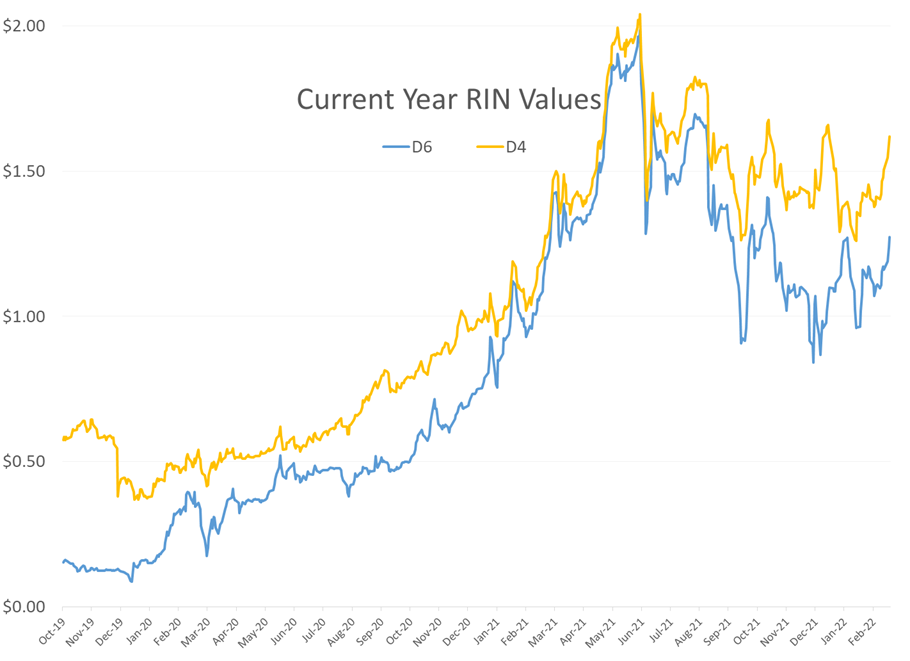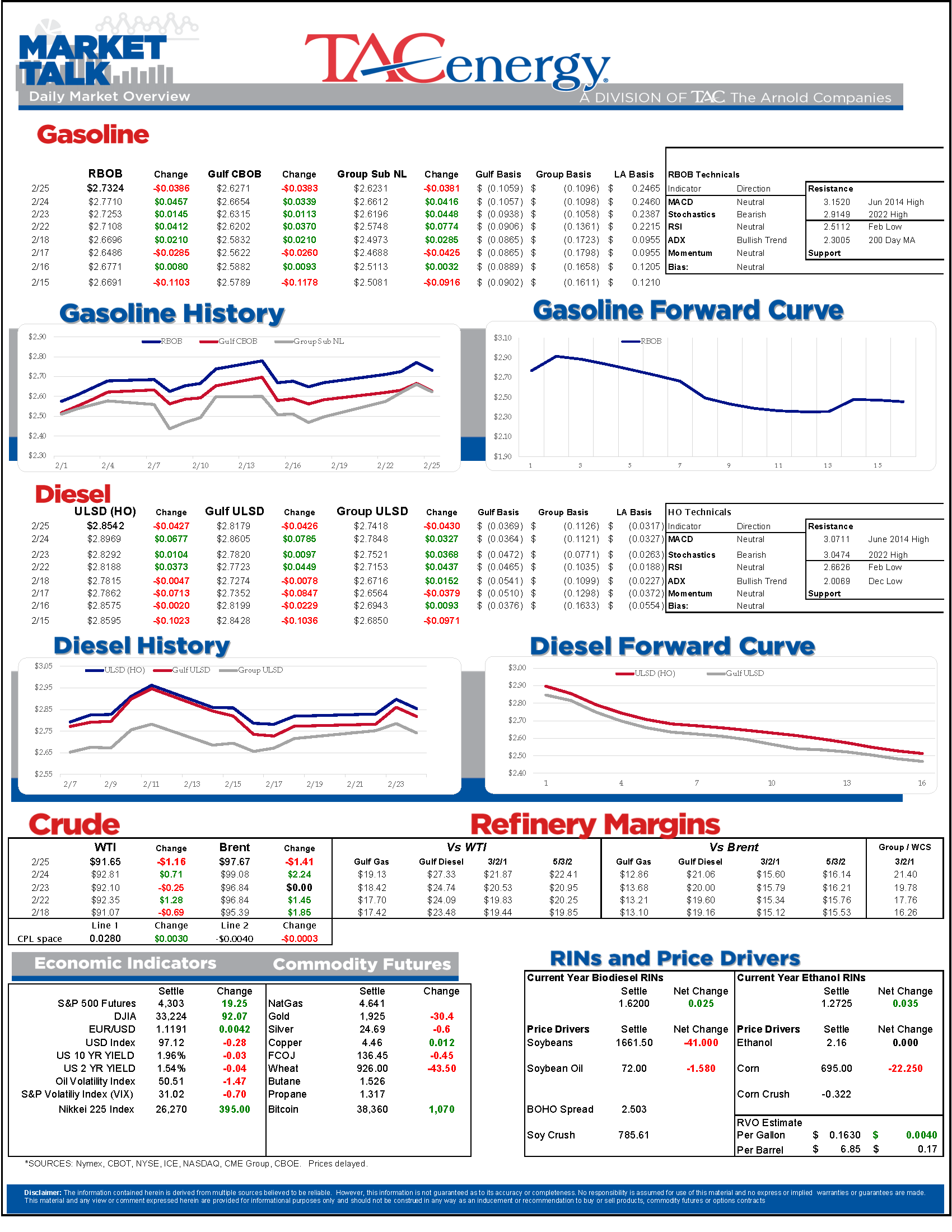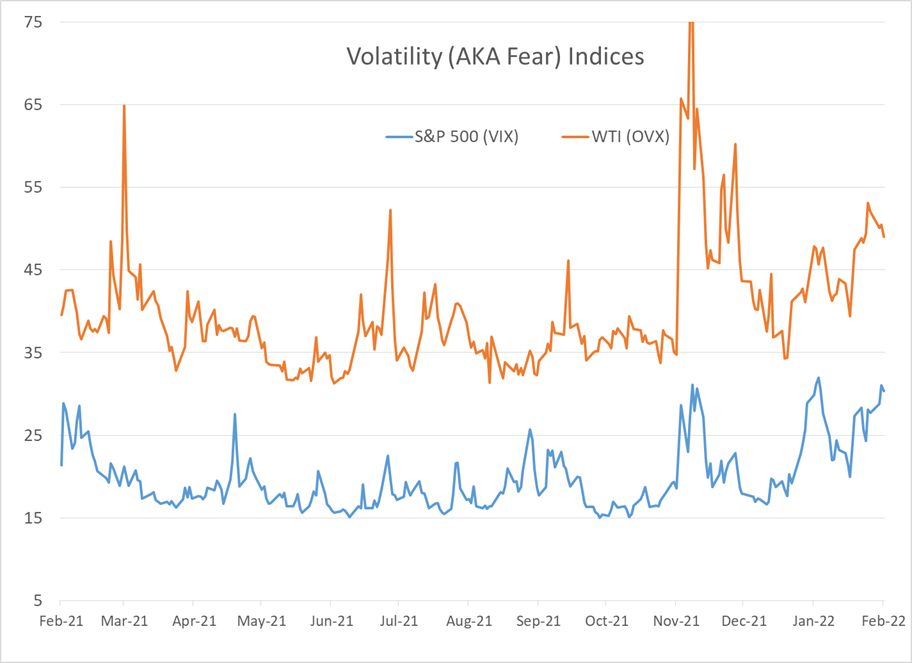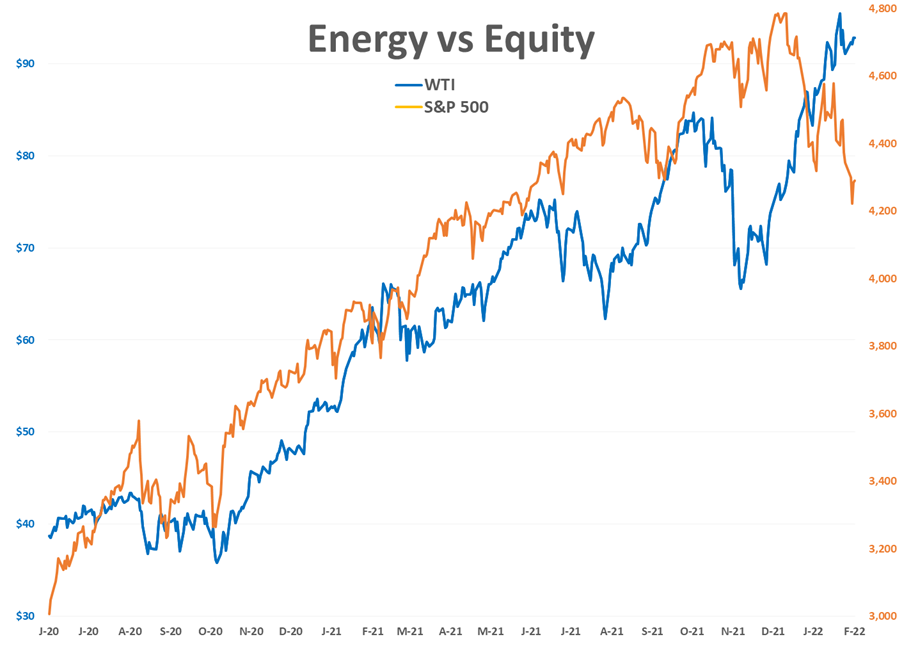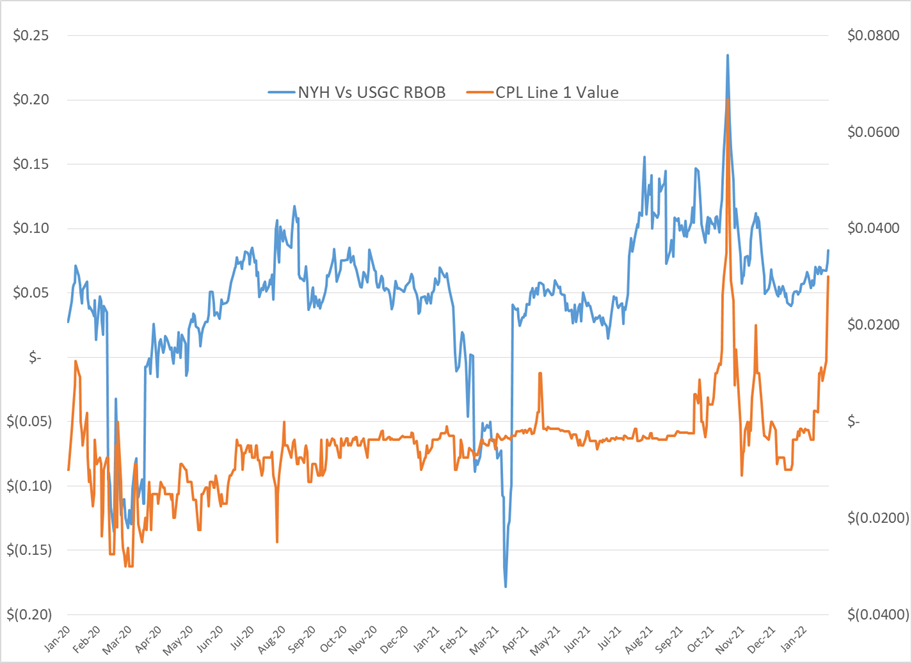Markets Around The World Are Transitioning From Full Panic To Major Discomfort As The Russian War On Ukraine Continues

Markets around the world are transitioning from full panic to major discomfort as the Russian war on Ukraine continues, but the fallout has been isolated so far. This time yesterday brought with it breathless comparisons to other notorious market shocks, as Europe was not only facing its most severe military conflict since WW2, but it came with an only-slightly-veiled threat of nuclear war should other countries try to intervene.
Equity markets staged a huge recovery Thursday afternoon, and energy prices pulled back sharply, as traders digested the new reality that most have only read about in history books online, with several factors seeming to play into the calming down we witnessed throughout the day.The US President had promised sanctions would be “swift and severe” if Russia invaded Ukraine. Thursday he announced a variety of moves that may be seen as severe, but avoided cutting Russia off from the SWIFT payment system, which is seen as a way to keep a penalty in reserve if needed, allow European banks to continue receiving loan payments from Russian firms, and probably most importantly, allow for Russian energy exports to continue.
Expectations that the FED would take it easier on interest rate hikes to try and offset some of the economic impact of the war & sanctions also seemed to encourage stock markets. The CME’s FedWatch tool shows that 2 days ago, there was a 33% probability of a 50 point rate hike at the March FOMC meeting, but that likelihood dropped to 21% yesterday.
While the panic has subsided, we’re a long way away from a calm market. After refined product prices pulled back 15-18 cents from the overnight highs Thursday afternoon, energy buyers did step back in pushing prices 5-6 cents higher last night, only to see a drop to 2-3 cent losses earlier this morning. That type of volatility is to be expected as long as the fighting and constantly changing stance on sanctions continues.
Physical product trading in the US had a fairly muted reaction, with most regional cash markets seeing only small basis moves on low liquidity, which is common when the futures market goes wild. RIN values did move higher on the day as the risk of trickle down effects from Black Sea supply disruptions to grain markets took hold, but like the rest of the energy contracts those prices pulled back sharply from the initial round of panic buying.
The lack of reaction in USGC products was particularly noteworthy given the ongoing shutdown of the products pipeline FKA Plantation as the company investigates a leak in Georgia. Values for shipping space on Colonial had already jumped last week as the annual RVP transition opened up the Gulf-East Coast arbitrage window, and those values held steady Thursday, suggesting the big physical traders aren’t yet too concerned that the pipeline will be down for long. There are already reports that some retail stations in the US are seeing long lines as consumers fill their various forms of fuel tanks due to the Russian invasion, and if the Plantation line stays down for another couple of days, that phenomenon could get much worse.
Some notes from the DOE report Thursday (that no one seemed to pay attention to for more than a minute or two):
US diesel inventories declined for a 6th consecutive week, and are holding 30 million barrels (nearly 1.3 billion gallons) below their average for this time of year. Demand both domestically and abroad remains strong, which helps explain why the coasts (PADDs 1, 3 and 5) are all tight, while the landlocked locations (PADDs 2 & 4) are relatively well supplied. There’s a similar but less severe phenomenon with US Gasoline inventories which are slightly below average in total, with coastal markets seeing tighter supplies than normal. Another theme is that while supplies are well below year-ago levels this week, that’s about to change for many markets as refiners continue to operate relatively well through a parade of winter storms, and while there have been a handful of upsets, there is nothing even remotely resembling the disruption we were facing a year ago.
Latest Posts
Week 16 - US DOE Inventory Recap
Energy Markets Trading Quietly In The Red As Ethanol Prices Rally To Five-Month High
The Struggle For Renewable Producers Continues As A Rapid Influx Of Supply And Crashing Credit Prices Make Biodiesel
After Years Of Backwardation, Diesel Prices Have Slipped Into Contango Over The Past Week
Social Media
News & Views
View All
Week 16 - US DOE Inventory Recap

Energy Markets Trading Quietly In The Red As Ethanol Prices Rally To Five-Month High
Energy markets are trading quietly in the red to start Wednesday’s session after a healthy bounce Tuesday afternoon suggested the Israel-Iran-linked liquidation had finally run its course.
There are reports of more Ukrainian strikes on Russian energy assets overnight, but the sources are sketchy so far, and the market doesn’t seem to be reacting as if this is legitimate news.
Ethanol prices have rallied to a 5-month high this week as corn and other grain prices have rallied after the latest crop progress update highlighted risks to farmers this year, lower grain export expectations from Ukraine, and the approval of E15 blends this summer despite the fact it pollutes more. The rally in grain and renewables prices has also helped RIN values find a bid after it looked like they were about to test their 4-year lows last week.
The API reported small changes in refined product inventories last week, with gasoline stocks down about 600,000, while distillates were up 724,000. Crude oil inventories increased by 3.2 million barrels according to the industry-group estimates. The DOE’s weekly report is due out at its normal time this morning.
Total reported another upset at its Port Arthur refinery that’s been a frequent flier on the TCEQ alerts since the January deep freeze knocked it offline and damaged multiple operating units. This latest upset seems minor as the un-named unit impacted was returned to normal operations in under an hour. Gulf Coast basis markets have shrugged off most reports of refinery upsets this year as the region remains well supplied, and it’s unlikely we’ll see any impact from this news.
California conversely reacted in a big way to reports of an upset at Chevron’s El Segundo refinery outside of LA, with CARBOB basis values jumping by more than a dime. Energy News Today continued to show its value by reporting the upset before the flaring notice was even reported to area regulators, proving once again it’s ahead of the curve on refinery-related events. Another industry news outlet meanwhile struggled just to remember where the country’s largest diesel seller is located.
Click here to download a PDF of today's TACenergy Market Talk

The Struggle For Renewable Producers Continues As A Rapid Influx Of Supply And Crashing Credit Prices Make Biodiesel
The sigh of relief selloff continues in energy markets Tuesday morning, with gasoline prices now down more than 20 cents in 7 sessions, while diesel prices have dropped 26 cents in the past 12. Crude oil prices are within a few pennies of reaching a 1 month low as a lack of headlines from the world’s hot spots allows some reflection into the state of the world’s spare capacity for both oil and refined products.
Gasoline prices are trading near a 6-week low this morning, but still need to fall about another nickel in order to break the weekly trendline that pushed prices steadily higher since December. If that trend breaks, it will be safer to say that we saw the end of the spring gasoline rally on April 12th for the 2nd year in a row. Last year RBOB futures peaked on April 12 at $2.8943 and bottomed out on May 4th at $2.2500. The high (at this point) for this year was set on April 12th at $2.8516, and the low overnight was $2.6454.
It’s not just energy commodities that are seeing an unwind of the “flight to safety” trade: Gold prices had their biggest selloff in 2 years Monday and continue to point lower today. Just how much money poured into commodities in the weeks leading up to the direct confrontation between Israel and Iran is unclear, but we have seen in year’s past that these unwind-events can create a snowball effect as traders can be forced to sell to cover their margin calls.
Supply > Demand: The EIA this morning highlighted the record setting demand for natural gas in the US last year, which was not nearly enough to offset the glut of supply that forced prices to a record low in February. A shortage of natural gas in Europe was a key driver of the chaotic markets that smashed just about every record in 2022, and an excess of natural gas supply in Europe and the US this year is acting as a buffer, particularly on diesel prices.
The struggle for renewable producers continues as a rapid influx of supply and crashing credit prices make Biodiesel, RD and SAF unprofitable for many. In addition to the plant closures announced in the past 6 months, Vertex Energy reported Monday it’s operating its Renewable Diesel facility in Mobile AL at just 50% of capacity in Q1. The truly scary part for many is that the $1/gallon Blender's tax credit ends this year and is being replaced by the “Clean” Fuel production credit that forces producers to prove their emissions reductions in order to qualify for an increased subsidy. It’s impossible to say at this point how much the net reduction will be for domestic producers, but importers will get nothing, and at current CI values, many biodiesel producers may see their “blend credit” cut by more than half.
Click here to download a PDF of today's TACenergy Market Talk.
